Rice, cotton, tinted, interspersed with vegetable fibers, with gold and silver chips. Paper has different degrees of absorbency. Paper with and without memory. Paper for calligraphy and calligraphic inscriptions. Paper for calligraphy and painting «Fan». As well as various forms — gold and silver for painting. And the paper has various shades of white, not bright white, antique, deep antique.
Centuries-old traditions of paper making, handmade, today provide an opportunity to penetrate the mysterious world of oriental painting and calligraphy. A reverent feeling seizes the artist when he touches a sheet of paper, imagining what kind of drawing will be done.
Paper is distinguished by its properties to absorb ink, depending on these properties of the paper, the desired pattern is obtained. The properties of the paper can be used to create the intended image.
We will talk about different types of paper, dwelling on its most advantageous qualities.
Paper that does not absorb moisture
For gunbi and moguf (contourless gunbi), paper is used that does not absorb moisture, with special processing — “Cicada Wings” and “Cicada Cover”, “Porcelain Sheets”.
On the website of the Two Empires Store there are several sizes of Cicada Wings.
This type of paper withstands multi-layer work with ink and mineral paints, allows you to draw a thin thread-like elegant outline. Sometimes an experienced artist processes this type of paper additionally with alum. For moguff and Se-Yi, Porcelain Sheets paper is excellent, it does not absorb moisture well, it is treated with alum, it does not allow the pattern to spread.
For gongbi, various ready-made forms; «Fan», «Circle», «Apple» of various shades: gold, platinum, silver in a wide range are presented in the store «Two Empires». A unique round silk fan is also designed for gongbi work.
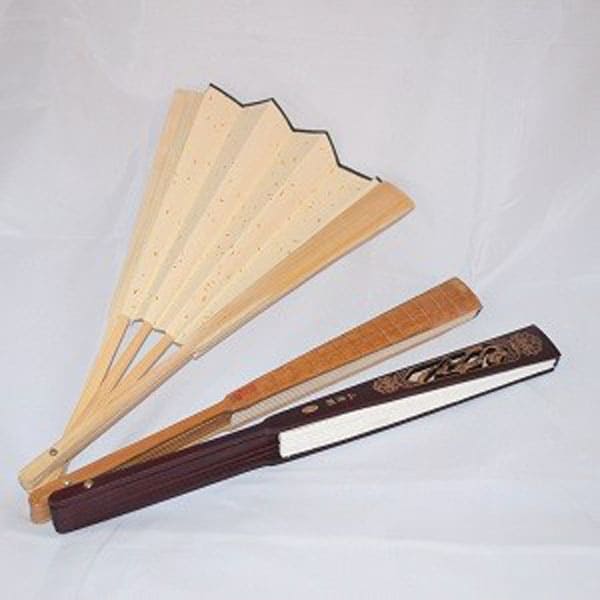
Fan for painting with golden chips
Medium absorbency paper
Paper of medium absorbency, for landscape, works of Se-I and Sumi-e styles, allows you to draw a beautiful line, work with a brush in different directions. The paper is suitable for beginners and experienced artists. We will talk about this paper later, because there is a very wide range, which includes paper with a beautiful texture and various plant inclusions.
Particular attention, from the «paper with medium absorbency» line, deserves the paper «Jade Pages». It is suitable for both beginners and experienced artists. When working with it, you need to remember how much moisture is on the brush. If there is a lot of moisture on the brush, it will leave a beautiful smudge, but a thin, semi-dry brush tip will give a beautiful line. You can also draw on it with a brush, on which several shades of ink or mineral paint are typed. Landscapes, Se-I, Sumi-e. The paper has a white tint and a beautiful soft texture.

Paper «Jade pages» dry

Jade Pages paper damp
Also to the line «paper of medium absorbency» is «Cotton». Multifaceted paper, with unlimited possibilities. Reveals the beauty of the carcass to the fullest. According to the display properties of the artist’s idea, it is close to the well-known among professionals «Vase». It is very pleasant to work on cotton paper, both on a dry canvas and on a wet one. If you stop the brush with ink, the paper begins to absorb the ink, giving the smudges a beautiful fan appearance. The paper is reusable when wet. It is on it that you can make unique portraits of animals, it allows you to perform beautiful work with a dry brush.

Cotton paper dry

Cotton paper is damp
When combining different techniques, the work of even a novice artist turns out to be very advantageous. After the work is completed and the knurling is done, the paper seems to “straighten out”, it is a dense beautiful texture, the cotton villi sink deep into the paper, only in some places reminding of themselves. A very noble paper with a beautiful white tint, giving the ink contrast.

Cotton paper for landscape and people. Medium absorbent.
There are some more subtleties in working with a landscape, which stain remains on paper, you can check in the lower corner by touching it with a wet brush.
Which side to draw — rough or smooth?
Different artists have their own preferences. With cotton paper, if you don’t really want all the fibers to be visible after knurling, it’s best to paint on the smoother side. If you draw on the rough side, the mascara spreads more and absorbs more.
Paper with different textures and vegetable patches
Rice paper with thin falling lines, a light gossamer with a slight bluish-grayish tint — «Ban Sheng Water Ripples».

Water ripples in the wet
Each sheet has its own pattern, either more distinct, or less distinct, soft. Paper does not absorb moisture. The paper is preferred for Chinese landscape, ce-i and calligraphy. You can try to work on wet, the ink will form beautiful stains without penetrating deep into the paper. Rice paper with plant elements, where small pink or yellow petals are introduced into the paper structure, will allow you to create an interesting composition with flowers or plants, images of birds. Paper of low degree of absorbency, fertile for working with mineral paints, thin outline and soft line.
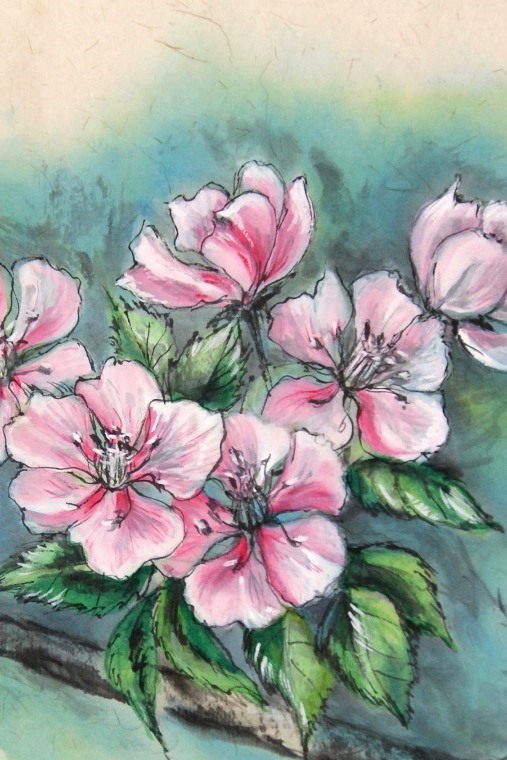
Fragment texture with fibers
Rice paper with plant elements — small green leaves will also let your imagination run wild, create a beautiful miniature. Paper of average absorbency. Preferred for working with mineral paints, fine contours and soft lines.
Rice paper with vegetable elements of a very light beige shade with brownish fibers. Paper will allow you to create an interesting landscape or work in the Se-I technique. Paper of medium absorbency, requires accuracy in work.
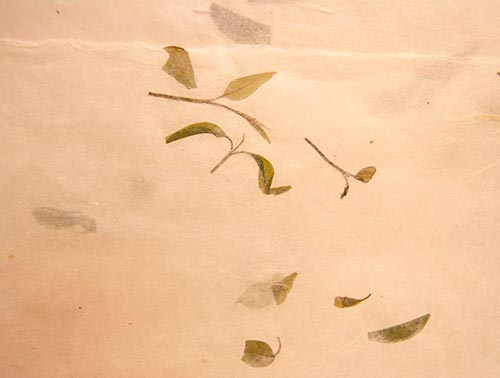
With leaves
Cotton paper has coarse fibers in its structure. White, has a slight shade of ivory. It absorbs moisture well, allows long-term work in various techniques, it is especially interesting in landscape and animal painting. It is close in character to the Japanese paper «Washi». After the sticker, the work has a dense structure, the fibers are almost invisible.
Rice tinted paper — black, red, brown…
Red. It has a noble red color. Average absorbency. Sheet size: 69×136 cm
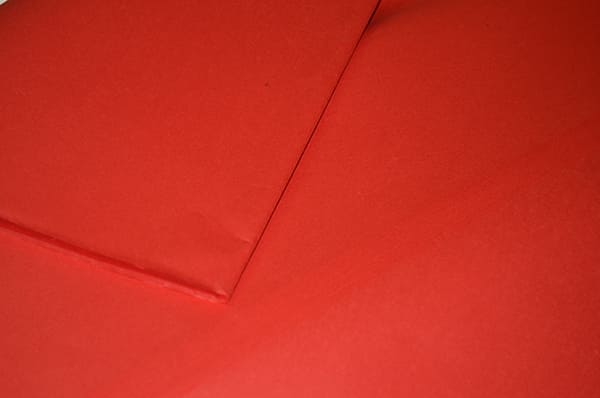
Tinted paper, red
Brown. It has a deep beautiful brown color. Allows you to use your imagination to create a unique work in the style of Se-Yi. Paper of average absorbency. Sheet size: 69 cmx138 cm.
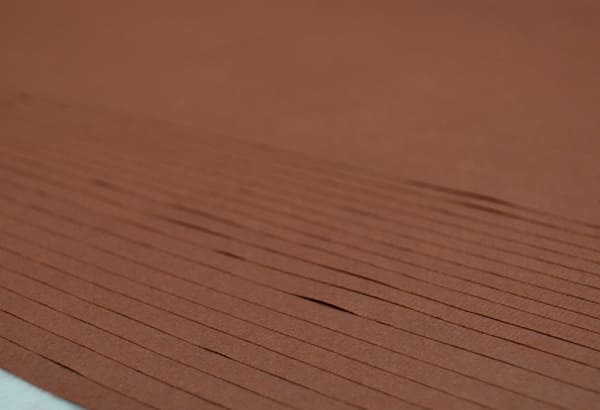
Tinted paper, brown
Black. Medium absorbency paper with rich potential for creating unique work. On paper, you can work with mineral paints, create a strict pattern with white paint or an exquisite pattern with gold paint.
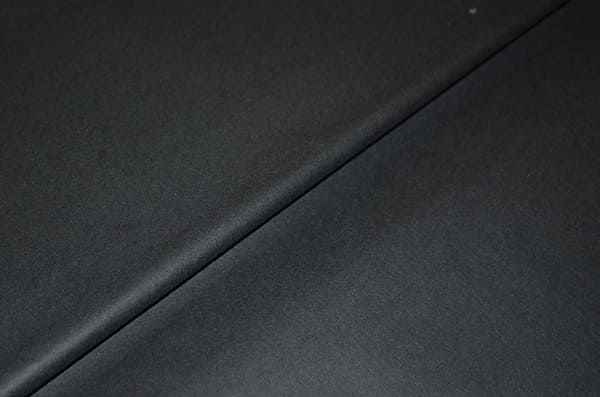
Tinted paper, black
Tinted paper with a printed pattern for creativity or a pattern reminiscent of ancient parchment. This line is represented by several types of paper.
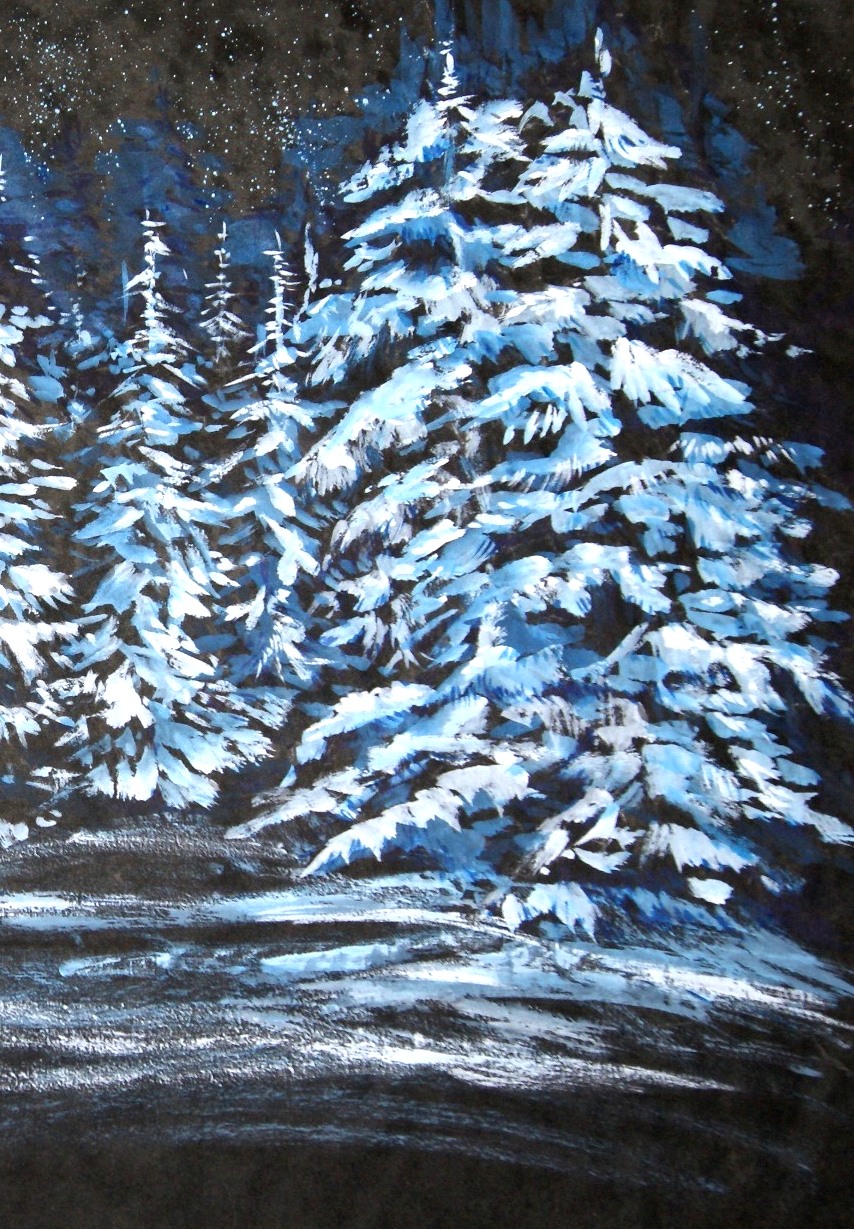
Fragment on black paper
Paper with toning in the form of parchment. Size 34 x 69cm. Paper is interesting for working with antique landscapes, depicting classical everyday scenes, and creating calligraphic inscriptions.
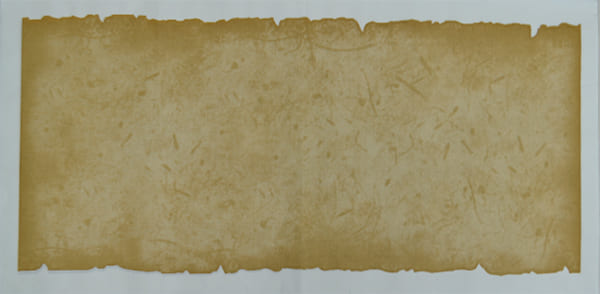
Paper for painting and calligraphy «Ancient parchment»
Paper with toning «Ancient Scroll» Size 34×69 cm. The paper is interesting for working with antique landscapes, creating calligraphic inscriptions.
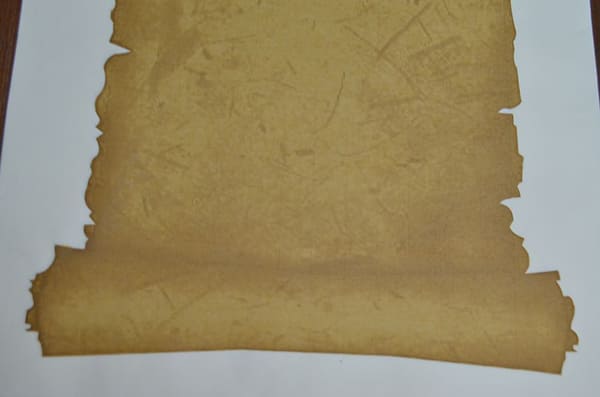
Paper for painting and calligraphy «Ancient scroll»
Paper with a tinted background, medium absorbency, has an uneven tint and three printed Chinese seals. The paper is suitable for calligraphic work and exquisite landscape in antique style. Paper size 35cm x 34cm, tinted margin; 30cm x 30cm.
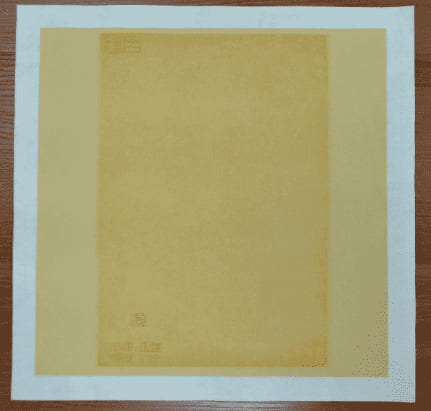
Paper with tinted background
Paper for creativity with a ready-made background. Sheet size 34 x 69cm. The paper is printed with an antique pattern, interesting for creating work with calligraphic text.

Paper for creativity with a ready-made background.
Paper with memory
What is memory paper is the property of the paper to remember every movement of the brush, and the subsequent stroke (touch) of the brush cannot overlap the previous brush movements left on the paper. At the same time, if you master the technique of working on paper with memory, you can create very interesting works, they will resemble a stained glass window.
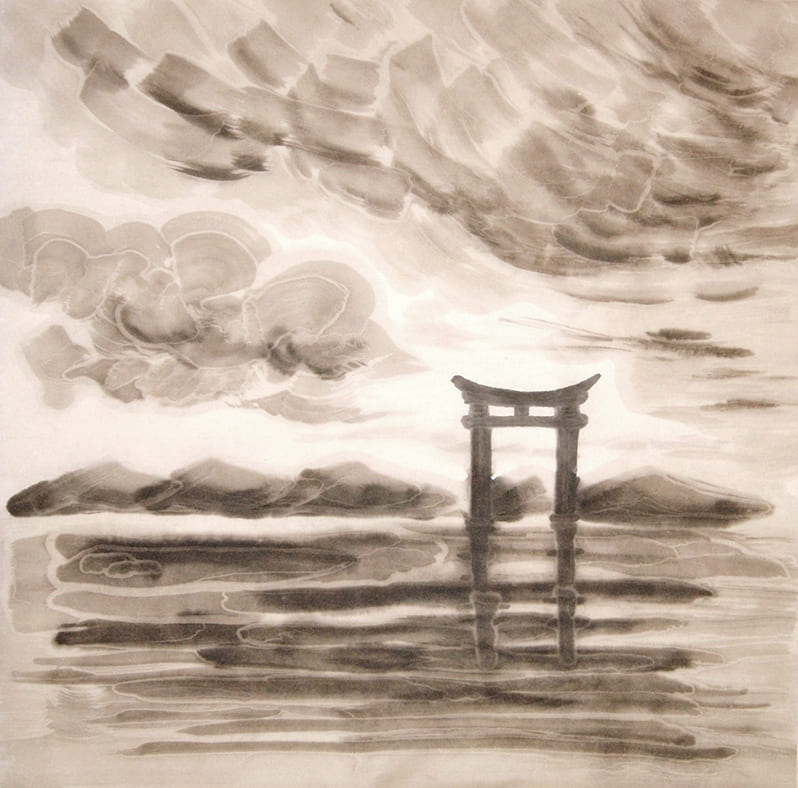
Memory Paper — Buddha Gate
With these properties of paper, you can create amazing works, but it is still desirable that you have experience drawing on rice paper.
Sometimes, an artist, when purchasing paper with memory, is not familiar with such properties of paper, and when a drawing is created, and you want to create an even background, you may encounter errors, an even background on such paper can only be obtained if the area where you want to remove the memory properties on paper is removed it is necessary to process the paper with a Dosa solution. «Dosa» and «Nikawa» are used in Japanese painting. Dosa is a less saturated Nikava solution.
Solutions «Dosa» and «Nikava» are sold ready-made, they are in demand by artists who have creative skills in working with these solutions. «Dosa» can be created independently, using a solution of artistic gelatin. Gelatin is dissolved in certain proportions, the solution is heated to dissolve artistic gelatin. Then the solution is cooled and filtered through a sieve or gauze. This solution is not stored, because it loses its properties during storage, it is used in the work one time. It is better to buy a ready-made Dosa or Nikava solution, which can be stored for a long time.
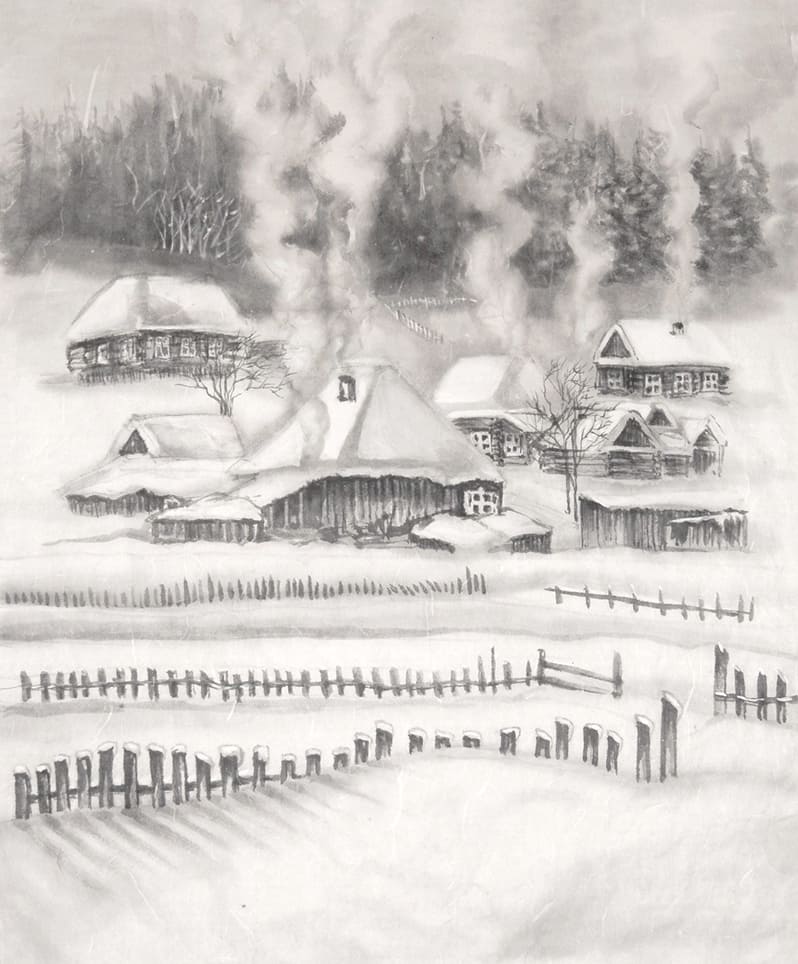
Working with reserves — gelatin
«Dosa» (or the resulting solution after gelatin processing) is used in special techniques in modern Japanese painting, when depicting a landscape with fog, smoke or steam. In fact, «Dosa» is a reserve, it is applied to those places on the paper that should remain lighter. And, of course, it is desirable to get acquainted with the techniques of working with reserves in order to draw a beautiful landscape with fog, haze or steam.
Currently, artists make little use of the unique properties of memory paper, completely undeservedly. Memory paper is rare on sale, in a specialized store they will tell you whether the paper has memory or not, it is easy to check on a sample, usually when brushing ink on a memory paper sample, a water halo remains around the ink, and the next brush stroke overlaps the previous one.
«Memory» properties are sometimes present in the paper with subtle silvery inclusions.
A little about shikishi
Shikishi — rice paper on cardboard, framed — has a golden narrow edging. Shikishi is used in miniature painting, both monochrome and color. Paper in shikishi also has a different degree of absorbency, it comes in several shades: boiling white, delicate — ivory, and red with golden splashes. Shikishi sizes also vary. The finished work can be inserted into a special finished frame, trimmed with silk or framed under glass with a passe-partout. Please note that shikishi is afraid of moisture, standing for a long time without decoration just on a shelf is not desirable, the picture bends, absorbing moisture from the room. It is still better to arrange the finished work in a frame.
Centuries-old traditions of Japanese and Chinese painting, brushes, ink and especially paper make it possible to create unique inimitable works. Even if you have just started your path of mastery and mastery of oriental painting, you will be imbued with respect for the techniques and will be happy to learn new endless possibilities, techniques of old and modern masters!
